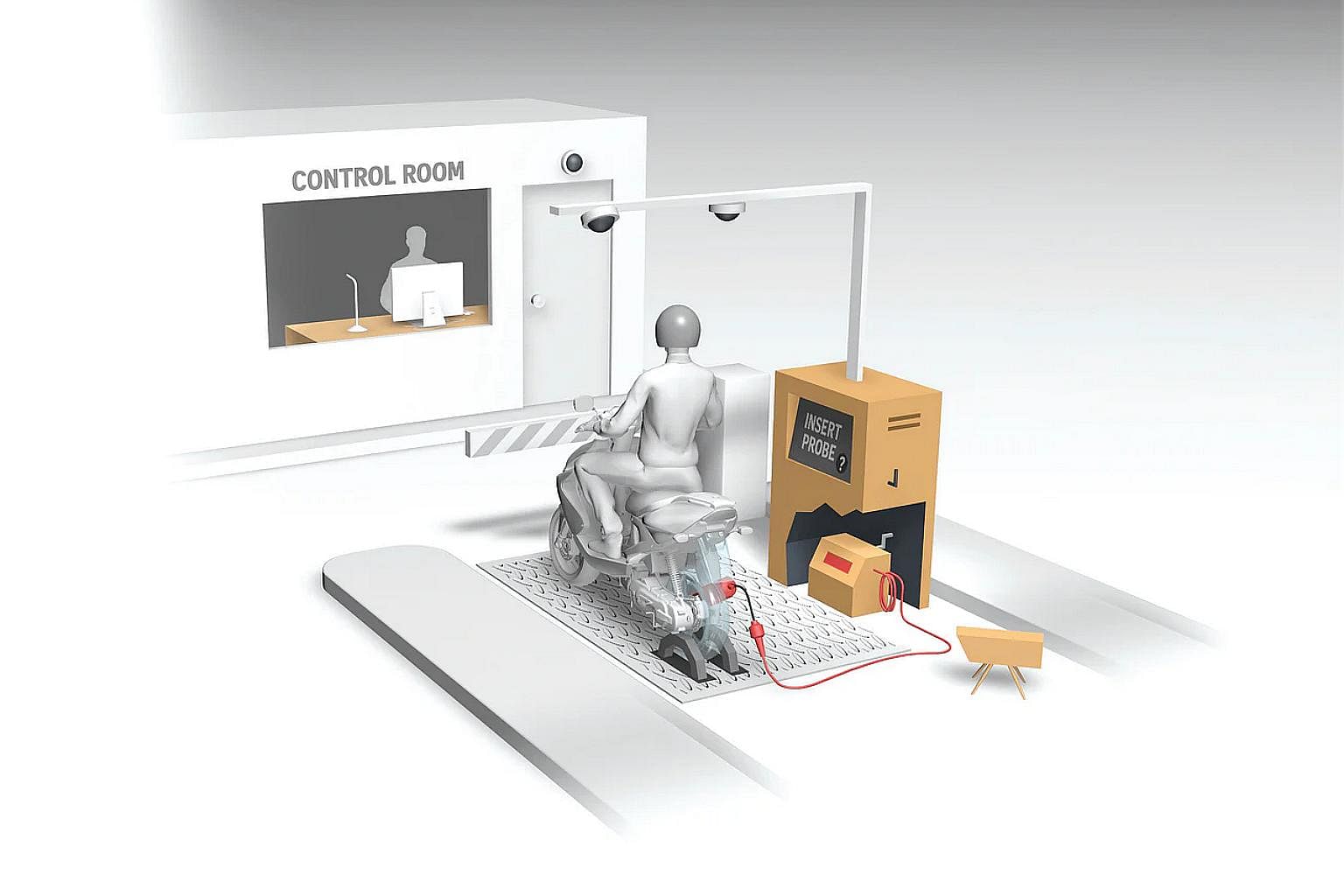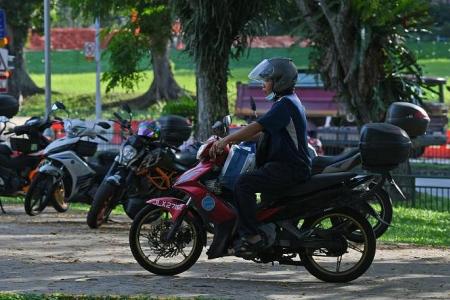NEA to trial emission self-testing for motorcyclists entering at Woodlands Checkpoint
Motorcyclists entering Singapore via Woodlands Checkpoint may soon have to conduct their own tests to ensure their vehicles meet the required emission standards here.
This is a new enforcement concept that the National Environment Agency (NEA) intends to trial in order to better tackle the issue of pollutive motorbikes.
On Aug 25, NEA put up a tender calling for a self-testing facility to be set up at Woodlands Checkpoint. This comes as stricter carbon monoxide and hydrocarbon limits are set to kick in from April 6 next year for all foreign motorcycles, as well as local motorcycles registered before July 1, 2003.
According to tender documents seen by The Straits Times, the proposed facility will allow emission tests to be done under the remote supervision of NEA officers, who will be stationed at a nearby control room.
The facility will be able to accommodate two- and three-wheeled motorcycles, and will have probes that can be inserted into any motorcycle's tailpipe.
An emissions meter will be able to measure both hydrocarbon and carbon monoxide levels in the motorcycle's exhaust fumes, and there will be a camera that can recognise license plate information and check if visible smoke is emitted from the vehicle.
The trial is to start at the arrival area of Woodlands Checkpoint about 10 months after the tender is awarded.
No specific dates were given, nor did NEA say how long the trial will last.
NEA will evaluate the effectiveness of the facility, how user friendly it is, the time taken for each test and its impact on traffic flow.
As this is a trial, not all motorcyclists entering the checkpoint will be required to perform the test, NEA said.
If successful, the concept can be scaled up, which in turn will allow enforcement efforts to be stepped up, it added.
This will improve productivity and operational effectiveness, NEA said.

NEA did not say how many officers it currently deploys to conduct enforcement checks at the checkpoints in Woodlands and Tuas, or how much the proposed self-testing facility will reduce its manpower needs.
Between 2017 and 2019, an average of 430 enforcement actions were taken each year against riders with pollutive motorcycles at the two land checkpoints.
From April 6 next year, foreign motorcycles must meet the new emissions limits of 4.5 per cent carbon monoxide by volume, and 7,800 parts per million (ppm) of hydrocarbon for two-stroke engines or 2,000 ppm of hydrocarbon for four-stroke engines.
NEA added that most of them will be able to meet the tightened standards with proper maintenance. Those who run afoul of these limits may be offered a composition fine ranging from $70 to $150.
If they are taken to court and found guilty, they can be fined up to $2,000 for the first offence and up to $5,000 for subsequent offences.
Malaysian motorcyclist Lee Chung Hua, 24, who works as a mechanic in Singapore, said the new concept may create more inconveniences for those who cross the land borders daily.
But he also sees the benefit of enforcing emissions standards.
"I see quite a lot of motorbikes that are very old, with engines that have not been serviced in a long time. They spew white smoke that is very smelly and those queuing behind have to suffer," he said in Mandarin.
Mr Rex Tan, president of the Singapore Motor Cycle Trade Association, said the stricter emissions standards affect motorbikes currently in use, and do not impact new sales here.
Get The New Paper on your phone with the free TNP app. Download from the Apple App Store or Google Play Store now


